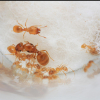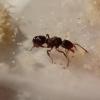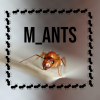Hi! ![]()
Some of you may have seen my other *journal* of this colony (not really my journal though :0) in the General Ant Keeping section. I chose not to include this colony in my collective journal simply because I feel like this is more of an “experiment”. For those who haven’t seen the introduction and explanation of this colony, then allow me:
*Start Explanation*
This colony came into my possession about a week ago when my mother found a decaying hickory nut with the colony inside. The colony (of T. curvispinosus), didn’t seem suspicious at first, but then I found out after opening the hickory nut that no queen seemed to be present - even more, the colony consisted mostly of males. This led me to believe that the queen had been dead for a while since this many unfertilized (presumably worker) eggs had been laid and had the time to hatch into males. I was about to get rid of this colony assuming that nothing special would happen, but I noticed a few fresh eggs and some pupae that seemed a little bit like worker pupae, so I kept the colony. Fast forward to today, and things are leaning towards the “fertilized worker theory” even more. The worker pupae in the colony has since been confirmed as, well, worker pupae... and there appear to be two workers with abnormally large abdomens who could possibly be fertilized. Things are looking pretty good right now, but everything that I have researched points to the conclusion that it should not be possible for these ants to produce a fertilized worker due to their anatomy (correct me if I’m wrong on that ![]() )
)
*End Explanation*
Here are some pictures from today for those who haven’t seen them:

(^^^ Here you can see the two workers with large gasters)



(^^^ In these last three pictures you can see the sheer amount of males present as well as some of the brood pile (specifically worker pupae and eggs). I apologize that the test tube is foggy)
I’m really excited to see how this colony could turn out, so sorry for spammy posts lately on the other thread 0-0 I can be very annoying.
Edited by CatsnAnts, July 29 2020 - 3:00 PM.

































































